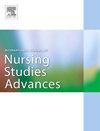运动疗法对胰腺癌患者的影响:一项系统综述和荟萃分析
IF 3.1
Q1 NURSING
International Journal of Nursing Studies Advances
Pub Date : 2025-08-05
DOI:10.1016/j.ijnsa.2025.100398
引用次数: 0
摘要
据报道,运动疗法对胰腺癌患者的益处包括维持和改善身体健康和肌肉力量,减少治疗相关的副作用,提高生活质量。然而,证据仍然不确定,需要整合介入研究以达成共识。本研究旨在通过随机对照试验的荟萃分析阐明运动干预对胰腺癌患者的影响。方法采用PubMed/MEDLINE、Scopus、CINAHL、PEDro数据库,检索2024年5月前发表的文献。搜索词包括胰腺癌、运动相关术语、身体功能和生活质量。主要结果是生活质量,次要结果是身体功能。所有meta分析均采用随机效应模型进行。结果最终分析包括6项研究,样本量从40例到172例不等。3项研究的干预类型为阻力训练,3项研究的干预类型为有氧运动与阻力训练相结合。4项研究的干预时间为手术或化疗后,2项研究的干预时间为化疗或放化疗期间。三个随机对照试验采用欧洲癌症研究与治疗组织生活质量问卷- c30来评估生活质量。身体功能通过肌肉力量测量(等速和等距力量)、5椅站立测试和6分钟步行测试来评估运动能力。运动干预对改善身体生活质量有效(标准化平均差= 0.41,95%可信区间= 0.07-0.74,p = 0.02)。此外,观察到上肢肌力(标准化平均差值= 0.50,95%置信区间= 0.21-0.80,p = 0.0008)和下肢肌力(标准化平均差值= 0.35,95%置信区间= 0.14-0.56,p = 0.0009)均有改善。另一方面,在6分钟步行测试中,运动治疗的效果在运动组和对照组之间没有显著差异。结论运动治疗可有效提高胰腺癌患者的上肢和下肢肌力,改善患者的身体生活质量。然而,由于所有纳入的研究都被评估为具有高偏倚风险,本综述的结果应谨慎解释。本文章由计算机程序翻译,如有差异,请以英文原文为准。
Effects of exercise therapy in patients with pancreatic cancer: A systematic review and meta-analysis
Introduction
The reported benefits of exercise therapy in patients with pancreatic cancer include maintaining and improving physical fitness and muscle strength, reducing treatment-related side effects, and enhancing quality of life. However, the evidence remains inconclusive, necessitating the integration of interventional studies to reach a consensus. This study aimed to elucidate the effects of exercise interventions for patients with pancreatic cancer through a meta-analysis of randomized controlled trials.
Methods
A literature search was conducted to identify articles published prior to May 2024, using the PubMed/MEDLINE, Scopus, CINAHL, and PEDro databases. Search terms included pancreatic cancer, exercise-related terminology, physical function, and quality of life. The primary outcome was quality of life, and the secondary outcome was physical function. All meta-analyses were conducted using a random-effects model.
Results
The final analysis included 6 studies, with sample sizes ranging from 40 to 172 patients. The intervention types were resistance training in 3 studies and a combination of aerobic exercise and resistance training in 3 studies. The timings of the interventions were after surgery or chemotherapy in 4 studies and during chemotherapy or chemoradiotherapy in 2 studies. Three randomized controlled trials used European Organization for Research and Treatment of Cancer Quality of Life Questionnaire-C30 to assess quality of life. Physical function was evaluated using muscle strength measurements (isokinetic and isometric strength), the 5-chair stand test, and the 6-min walk test for exercise capacity. Exercise intervention was effective for improving physical quality of life (standardized mean difference = 0.41, 95 % confidence interval = 0.07–0.74, p = 0.02). In addition, improvements in both upper extremity muscle strength (standardized mean difference = 0.50, 95 % confidence interval = 0.21–0.80, p = 0.0008) and lower extremity muscle strength were observed (standardized mean difference = 0.35, 95 % confidence interval = 0.14–0.56, p = 0.0009). On the other hand, the 6-min walk test showed no significant difference in the effect of exercise therapy between the exercise and control groups.
Conclusion
The findings of this study indicate that exercise therapy for pancreatic cancer patients effectively increases muscle strength in the upper and lower limbs while improving their physical quality of life. However, because all the included studies were assessed as having a high risk of bias, the findings of this review should be interpreted with caution.
求助全文
通过发布文献求助,成功后即可免费获取论文全文。
去求助
来源期刊

International Journal of Nursing Studies Advances
Nursing-General Nursing
CiteScore
5.80
自引率
0.00%
发文量
45
审稿时长
81 days
 求助内容:
求助内容: 应助结果提醒方式:
应助结果提醒方式:


